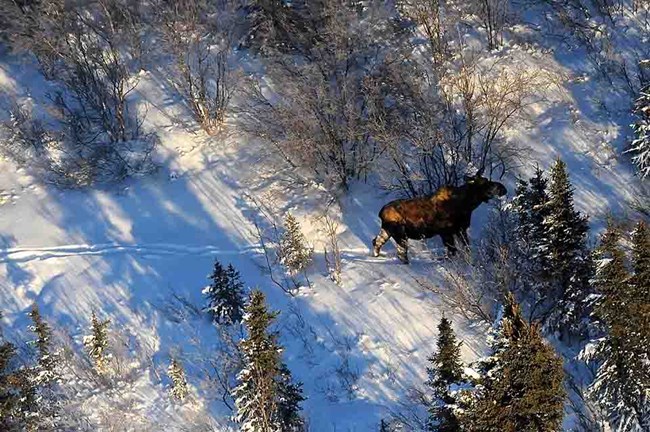Last updated: April 11, 2019
Article
What Limits Moose Populations?

NPS/Matt Cameron
Lying in wait: Limiting factors on a low-density ungulate population and the latent traits that can facilitate escape from them
Abstract
Predation, habitat, hunting, and environmental conditions have all been implicated as regulatory mechanisms in ungulate populations. The low-density equilibrium hypothesis predicts that in low-density opulations, predators regulate their prey and that the population will not escape unless predation pressure is eased. We evaluated survival of adult and juvenile moose (Alces alces) in north-central Alaska to determine whether or not the population supported the hypothesis. We instrumented adult male and female moose with radiocollars and used aerial observations to track parturition and subsequent survival of juvenile moose. Generalized linear mixed-effects models were used to assess survival. Adult annual survival rates were high (∼89%), but may be negatively influenced by winter conditions. Migratory status did not affect moose survivorship or productivity. Approximately 60% of the calf crop died before 5 months of age. Productivity was significantly lower in the northern section of the study area where there is less high-quality habitat, suggesting that, even in this low-density population, nutrition could be a limiting factor. It appears that predation on young calves, winter weather, and nutritional constraints may be interacting to limit this population. Latent traits, such as overproduction of calves and migratory behavior, which do not currently enhance fitness, may persist within this population so that individuals with these traits can reap benefits when environmental conditions change.
Joly, K., T. Craig, M. D. Cameron, A. E. Gall, and M. S. Sorum. 2017. Lying in wait: limiting factors on a low-density ungulate population and the latent traits that can facilitate escape from them. Acta Oecologica 85: 174-183.
